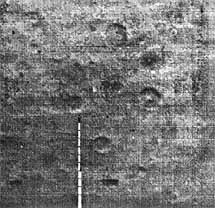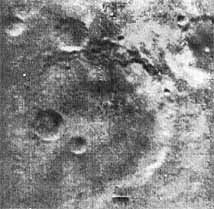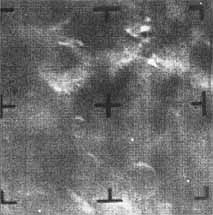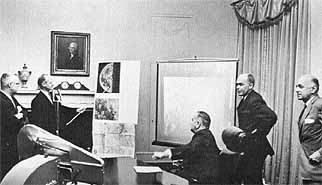















|
|
|
|
 |
 |
 |
[whole page 78] (Mariner 4 revealed a heavily cratered Mars, more like the moon than like Earth. Photos taken 14 July 1965, just before the closest approach of 9700 kilometers, were radioed back as digital data. At top left, Mare Sirenum, bordering on Atlantis. Above, Atlantis between Mare Sirenum and Mare Cimmerium. At left, bright region, northwestern Phaethontis. Below at the White House 31 July 1964, JPL Director William Pickering shows Ranger 8 photo of the moon to President Johnson. NASA Associate Administrator for Space Science and Applications Homer E. Newell is with him. Behind the president are Dr. Donald F. Horning, special assistant to the president for science and technology, and Dr. Edward C. Welsh, executive secretary, National Aeronautics and Space Council.) |
 | |